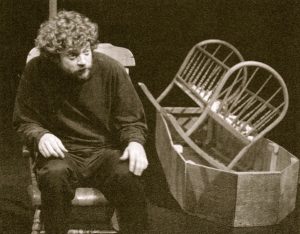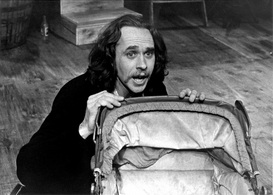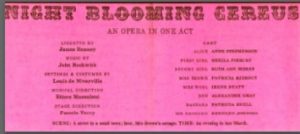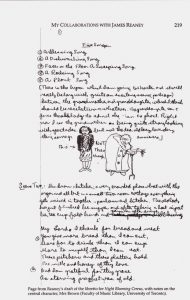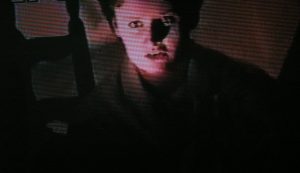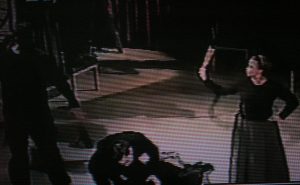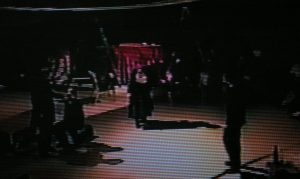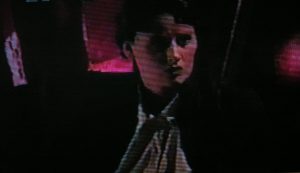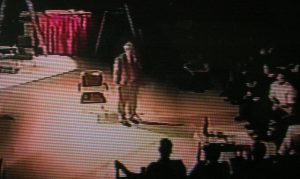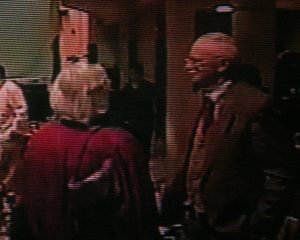James Reaney’s One Man Masque was first performed by the author as part of “An Evening with James Reaney and John Beckwith” at the Hart House Theatre in Toronto on April 5, 1960. Originally planned as the premiere of Beckwith and Reaney’s opera Night Blooming Cereus, One Man Masque and Beckwith’s Five Pieces for Brass Trio were added to form the first half of the program.
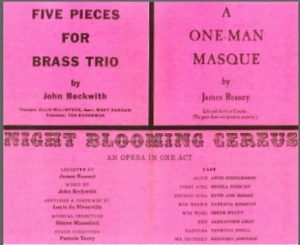
In his article “An Evening With Babble and Doodle: Presentations on Poetry” (Canadian Literature 12 Spring 1962, pages 37-43), James Reaney describes his ideas for presenting the poems as a masque:
Since the opera was to last only an hour John suggested that I read some poems to raise the curtain. I decided that something more than just a reading was called for, [… and] I ended up writing another libretto for a masque — masque in the sense of a series of tableaux and spectacles, or stage images. I had been working on a series of poems that presented a subject in various keys: you start out with a Dwarf, modulate to a poem about a Baby, proceed to one about a Dauphin (baby Prince) and eventually fly from it all with that baby among the birds — the humming-bird. This suggested a stage picture that started out with a cradle, proceeded through chair, table, bed, rocking-chair to coffin… [pages 41-42]
One Man Masque has been performed by Jerry Franken in 1974 at the Tarragon Theatre, Jeff Culbert at the Grand Theatre in 2002, and by Larry Beckwith at Nuit Blanche in 2010.
